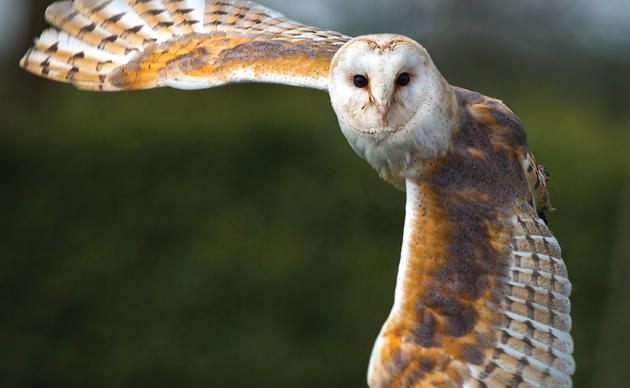Please welcome guest blogger Katharine Frazier. Katharine is a high school senior in Wilmington, NC. She served as a Wrightsville Beach bird steward for the 2013 nesting season and has a strong interest in birding and bird conservation. We left her previous blog post as she arrived at the beach on Cape Hatteras, in search of a Snowy Owl.
The trail was longer than I expected and when I came to an intersection with another trail, I drew an arrow in the sand with my foot to let my mom and Jill know which path I'd taken. I did this several times until the trail opened up onto the beach like a fan, spreading out as far as I could see to my right and left. Everything was blindingly white in the weak morning mist. I looked both ways, wondering which way I should go: the owl could be anywhere!
I remembered with a smirk that some of the birders who had seen the owl had said that once you reach the beach, the owl could either be on the left or the right. Suddenly, this seemed like the least helpful advice I had ever heard. Even though the Snowy Owl is one of North America's largest owls, it seemed nearly impossible that I'd find it on this huge beach.
As I stood on the beach looking back and forth, precious seconds ticking away, it dawned on me that there was a dark smudge in the distance to my left. It stood out against the pale mist and sand, looking vaguely person-shaped. Could that be a birder? Do they see the owl?!
I drew another arrow in the sand, angled to the left, and headed in the direction of the water. It had been reported that the owl tended to stay closer to the dunes, so I wanted to make sure I didn't startle the bird away. I was both excited and nervous as I neared the water and the person, who seemed to be holding some sort of tripod.
Ahead of me, a flock of raucous gulls spiraled above the water. Out of habit I watched them out of the corner of my eye as I began to turn and walk parallel to the water.
That is, until I realized that something was off.
To be more specific, something was off about one of those gulls.
I snapped my head back in the direction of the flock. They flew in a group, wheeling and turning together; they moved in synchrony, except for one. One of the birds flew beneath the flock, its wing flaps heavier and more forceful. Rather than being slim and streamlined like the gulls, this bird's white body was shaped more like a flying cigar.
It was a movement of pure instinct and adrenaline that brought my binoculars to my eyes.
There it was, the Snowy Owl! It soared over the water, a scant thirty feet away from the shoreline where I stood. Its wings were dappled with black markings and I saw the glint of its yellow eyes when it turned its head. It followed the gulls' path for a while and then finally broke away, veering away to land a few hundred yards up the beach.
My scope balanced precariously on my shoulder as I used both hands to track the bird. I made note of its location - it was positioned halfway between the water and the dunes - and then turned back to look at the trail. I had to find my mother and Jill to tell them that the owl was here!
There they were, walking out onto the beach at the mouth of the trail. I ran to meet them, half-keeping my eyes on the Snowy Owl.
We met near the trail, tucking ourselves against the dunes to minimize the chances of the owl spotting us. We anxiously set up our scopes to look at the owl, which was resting atop a pile of what looked like shredded rubber tires. An odd place to sit for such a majestic creature; the juxtaposition between nature and industry was a disturbing one.
The owl was beautiful and snowy white, true to its name. I guessed that it might have been a female because of the dark barring on its chest. Her eyes were nearly the color of honey, contemplative as she scanned the horizon. Whenever she turned her head we were treated to a glimpse of the interesting markings on her neck; standing out against her white feathers were two dark spots that almost looked like eyes. Her talons, hidden beneath a layer of feathers, clutched at the tires with a strength that was evident from hundreds of yards away.
As Jill and I watched the owl through the scope and my mom took pictures, the person I had seen on the beach earlier approached us. Sure enough, he was another birder out to see the Snowy Owl - he had travelled from the Raleigh area, determined to see the owl after he'd missed one that had briefly stopped by the Triangle region.
We all stood in silent companionship, appreciating the owl. Minutes ticked by unnoticed and every one of the owl's movements was catalogued in my memory. The ocean breeze ruffled her feathers, making her look at times as if she were having the equivalent of what we call a bad hair day.
Pure white and much larger than any other bird on the beach, the owl looked completely out of place sitting on a beach in North Carolina. It was much hotter than the owl was probably used to - it must have been about sixty degrees - and there definitely weren't any lemmings running around for her to hunt. Despite this, she was finding a way to survive this far south. The owl's feathers were perfect camouflage for the sand and the ocean mist, and there had been reports of her feasting on unsuspecting gulls.
After a while of watching, we noticed that the owl began to look antsy. She looked back and forth with increasing frequency and began shifting, both signs of imminent flight. Sure enough, seconds later she spread her wings and took off, flying incredibly low to the sand. She swept over the beach like a ghost, never seeming to fly more than two feet above the ground.
She alighted further down the beach, this time choosing to sit beside a small bump in the sand. I relocated her in my scope and just as I was focusing the lens, she began to walk.
If you've never seen an owl walk, then you're missing out on quite a spectacle. Since her feet were covered in feathers, at a distance she looked as if she were wearing clunky, white boots. She only walked a few steps, but it was amazing to see. With every footstep, she lifted her "boots" in short, jerky movements that I never would have expected from an owl.
Once she'd settled, we decided to venture a little bit further down the beach. We stuck to the dunes, using them as a natural blind, and were careful to keep a large distance between us and the owl. We chose a spot and stayed there for a good while longer, continuing to observe and take pictures. There weren't many other people on the beach - just a few fishermen - and everything was still clouded over in a layer of delicate morning mist. Another birder joined us later on; she had just arrived from the Stumpy Point emergency ferry.
From the angle at which we stood, it appeared that the owl was sitting in front of the ocean; the view was fantastic, with crashing waves and the deep blue of the water providing a sharp contrast to her white feathers.
We stayed and watched the owl for a few hours, until we knew our departure time was approaching. We would have stayed longer, if not for the threat of missing our ferries back to the mainland.
The rest of the day was spent in a haze of drinking coffee and catching ferries; I think we stopped by the Cape Hatteras Lighthouse before leaving. As we sailed away from the Outer Banks that afternoon, I felt drained - but totally satisfied. We had, against all odds, seen the Snowy Owl. Even though it had required a nine-hour commute for just the possibility of seeing the owl, we hadn't allowed our doubts to stop us. Sure, I had barely slept over the past two days, but seeing the owl totally made up for it. I kept replaying the sight of the owl flying along with the gulls in my head; I couldn't believe how lucky we had been. It was a once-in-a-lifetime moment, and I'll never forget it.




